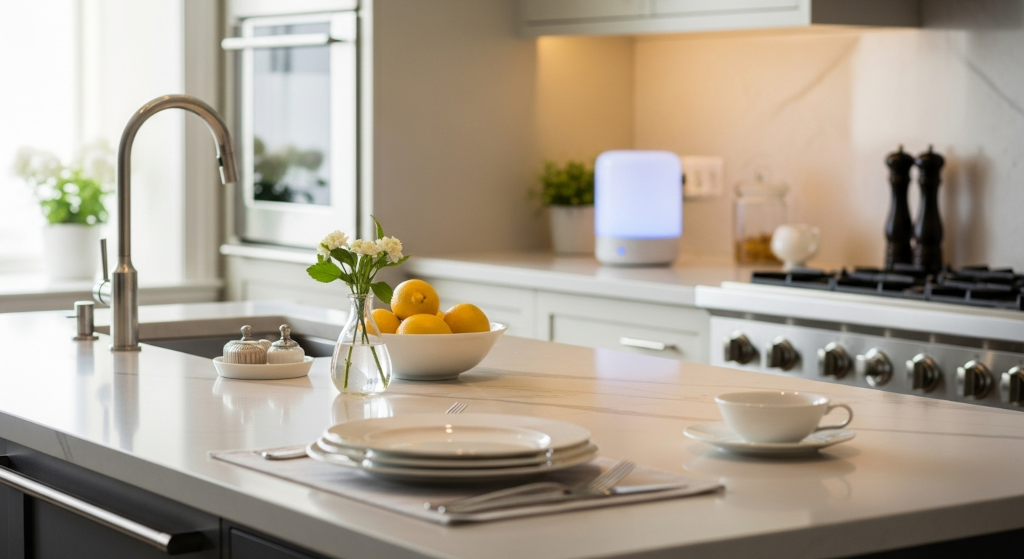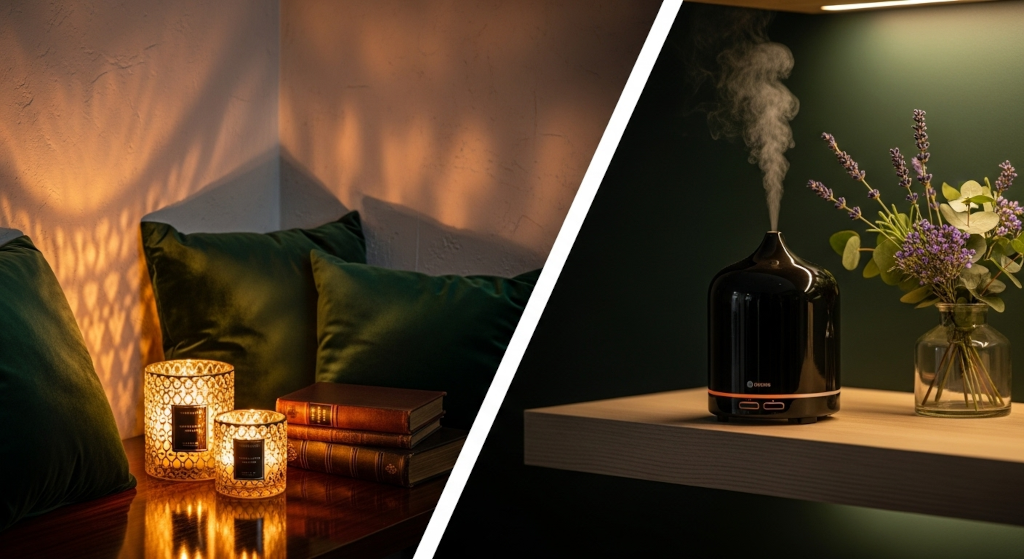Cooking fills the home with life, warmth, and comfort. Yet once the dishes are done and the lights dim, the air often carries the memory of what came before. Garlic, onions, and rich spices linger long after the meal, clouding the freshness of the space. Scent can help restore balance, clearing the air and returning calm to the heart of the home.
When fragrance follows cooking, it becomes part of the ritual of completion. It signals that the day is slowing down, that the meal has ended, and that the kitchen is once again a place of order and comfort.
The Need for Balance
Food aromas are powerful because they are complex. They include fats, oils, and heat that cling to air and surfaces. Instead of masking these notes with a stronger scent, the goal is to rebalance. A gentle fragrance can neutralize heavy tones while inviting a sense of renewal.
Cold air diffusion is especially effective for this purpose. It disperses fragrance oils evenly and cleanly, keeping the space feeling natural rather than perfumed. Through light bursts, it refreshes the air without competing with what was cooked.
Citrus for Clarity
Citrus is the cornerstone of after-cooking fragrance. Notes of lemon, grapefruit, and bergamot provide an instant sense of cleanliness. These oils contain natural molecules that lift and brighten, helping the air feel open again.
A single diffusion cycle of citrus-based oil can transform the kitchen atmosphere in minutes. Lemon and mandarin are uplifting, while grapefruit and lime add energy and sparkle. To soften these edges, layering with a touch of neroli or white tea creates an elegant, balanced finish.
Citrus scents pair beautifully with kitchens that receive natural light, echoing freshness rather than overpowering it. They also prepare the space for the next day, leaving behind only light, positive energy.

Herbs for Freshness and Grounding
Herbal notes bring calm order back into the kitchen. Basil, mint, rosemary, and thyme provide gentle green clarity that feels both lively and pure. They contrast well with food aromas that are dense or rich, creating a clean transition between activity and rest.
Using an herbal oil in the evening helps the space breathe again. Mint and basil are ideal for neutralizing lingering spice, while thyme and sage introduce subtle warmth without heaviness. A cold air diffuser allows these oils to circulate smoothly, reaching corners and high shelves where cooking smells often settle.
Woods for Depth and Softness
After citrus and herbs clear the air, gentle woods add texture and comfort. Light notes of sandalwood, cedar, or vetiver bring a sense of closure to the routine. They make the kitchen feel finished, calm, and quietly inviting.
Wood notes also blend easily with residual traces of spice, creating a seamless transition from cooking aroma to home fragrance. A few minutes of diffusion before turning off the lights allows the scent to settle into fabrics and wood grain, carrying a sense of peaceful completion through the night.
Timing and Placement
Restoring balance through scent begins with timing. Start diffusion after cleaning, when surfaces are dry and the air has cooled slightly. This prevents oils from mixing with heat or steam and allows fragrance to remain pure.
Place the diffuser where air moves naturally, such as near an entryway, window, or vent. Avoid setting it directly beside the stove or sink. In smaller kitchens, shorter diffusion cycles will be enough to refresh the space. For larger open kitchens, allow two low-intensity runs to maintain softness without excess scent.
By aligning the rhythm of fragrance with the rhythm of routine, scent becomes the final touch, like a quiet signature that completes the evening.
Creating a Consistent Routine
Scent routines are most effective when they are predictable. Using the same blend or rotation each evening builds an association of calm and completion. Over time, the air itself signals that it is time to rest.
A simple rotation might include a citrus-herbal blend during the week and a light wood-citrus combination on weekends. Pairing this with soft lighting and music reinforces the sense of order and renewal. The experience feels elevated yet effortless, turning an ordinary task into a sensory ritual.
The Beauty of Subtle Freshness
The kitchen is more than a place for cooking. It is the center of movement, energy, and gathering. Restoring its freshness each evening keeps the home feeling alive and harmonious.
Cold air diffusion allows this to happen with elegance and restraint. Instead of strong masking scents, it brings balance through precision. Every note from citrus for clarity, herbs for grounding, and wood for calm works in harmony to restore purity to the air.
The result is a space that feels clean yet comforting, bright yet relaxed. It is not the absence of aroma that defines a refreshed kitchen but the quiet layering of scent that restores its natural rhythm.
With care and intention, fragrance becomes part of the evening ritual, signaling that the heart of the home is once again at ease. Supported by the craft of a sophisticated scent company, even the simplest kitchen transforms into a place of calm renewal.








